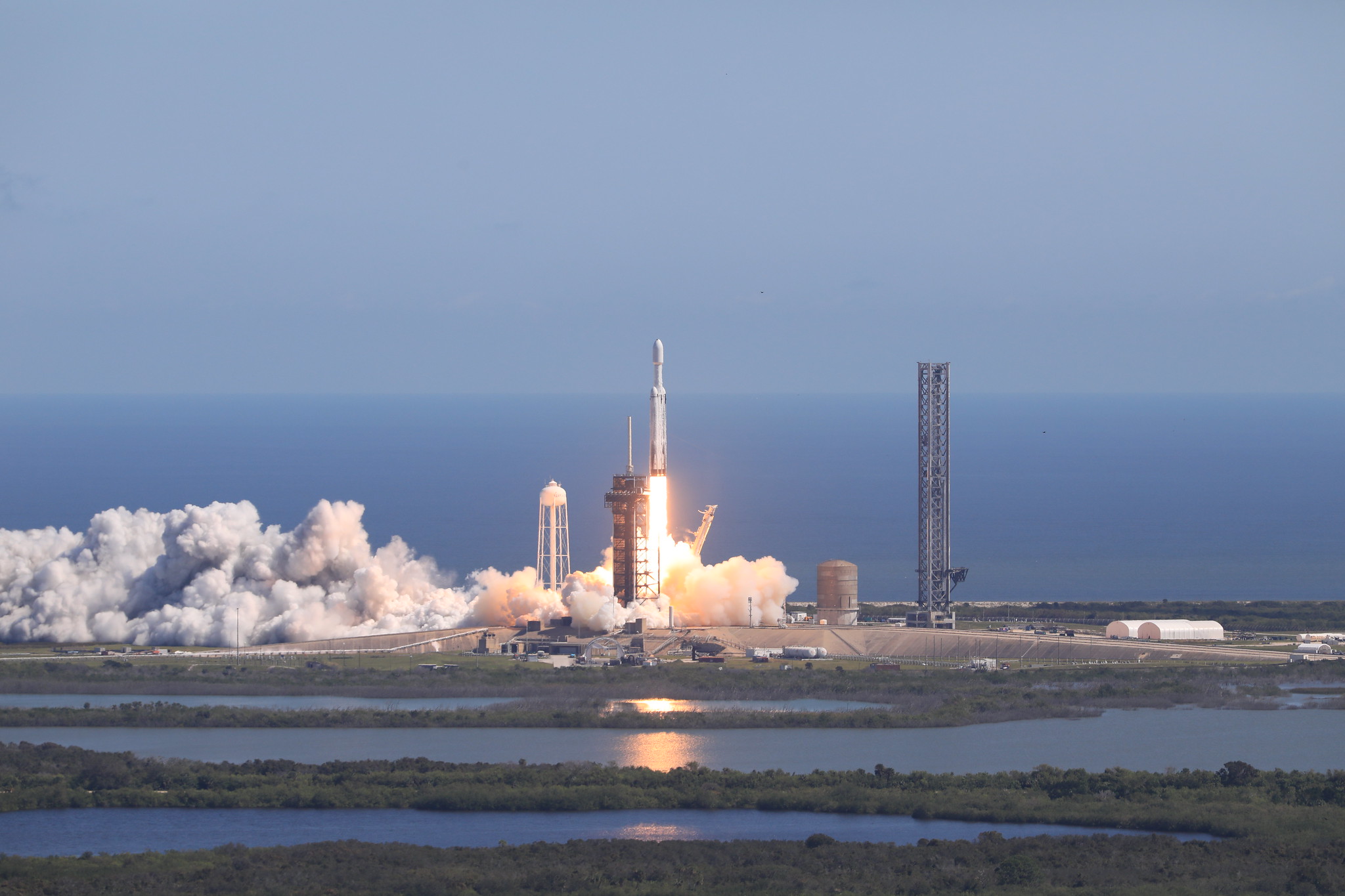
NASA's Europa Clipper has embarked on its long voyage to Jupiter, where it will investigate Europa, a moon with an enormous subsurface ocean that may have conditions to support life. The spacecraft launched at 12:06 p.m. EDT Monday aboard a SpaceX Falcon Heavy rocket from Launch Pad 39A at NASA's Kennedy Space Center in Florida.
The largest spacecraft NASA ever built for a mission headed to another planet, Europa Clipper also is the first NASA mission dedicated to studying an ocean world beyond Earth. The spacecraft will travel 1.8 billion miles (2.9 billion kilometers) on a trajectory that will leverage the power of gravity assists, first to Mars in four months and then back to Earth for another gravity assist flyby in 2026. After it begins orbiting Jupiter in April 2030, the spacecraft will fly past Europa 49 times.
"Congratulations to our Europa Clipper team for beginning the first journey to an ocean world beyond Earth," said NASA Administrator Bill Nelson. "NASA leads the world in exploration and discovery, and the Europa Clipper mission is no different. By exploring the unknown, Europa Clipper will help us better understand whether there is the potential for life not just within our solar system, but among the billions of moons and planets beyond our Sun."
Approximately five minutes after liftoff, the rocket's second stage fired up and the payload fairing, or the rocket's nose cone, opened to reveal Europa Clipper. About an hour after launch, the spacecraft separated from the rocket. Ground controllers received a signal soon after, and two-way communication was established at 1:13 p.m. with NASA's Deep Space Network facility in Canberra, Australia. Mission teams celebrated as initial telemetry reports showed Europa Clipper is in good health and operating as expected.
"We could not be more excited for the incredible and unprecedented science NASA's Europa Clipper mission will deliver in the generations to come," said Nicky Fox, associate administrator, Science Mission Directorate at NASA Headquarters in Washington. "Everything in NASA science is interconnected, and Europa Clipper's scientific discoveries will build upon the legacy that our other missions exploring Jupiter - including Juno, Galileo, and Voyager - created in our search for habitable worlds beyond our home planet."
The main goal of the mission is to determine whether Europa has conditions that could support life. Europa is about the size of our own Moon, but its interior is different. Information from NASA's Galileo mission in the 1990s showed strong evidence that under Europa's ice lies an enormous, salty ocean with more water than all of Earth's oceans combined. Scientists also have found evidence that Europa may host organic compounds and energy sources under its surface.
If the mission determines Europa is habitable, it may mean there are more habitable worlds in our solar system and beyond than imagined.
"We're ecstatic to send Europa Clipper on its way to explore a potentially habitable ocean world, thanks to our colleagues and partners who've worked so hard to get us to this day," said Laurie Leshin, director, NASA's Jet Propulsion Laboratory in Southern California. "Europa Clipper will undoubtedly deliver mind-blowing science. While always bittersweet to send something we've labored over for years off on its long journey, we know this remarkable team and spacecraft will expand our knowledge of our solar system and inspire future exploration."
In 2031, the spacecraft will begin conducting its science-dedicated flybys of Europa. Coming as close as 16 miles (25 kilometers) to the surface, Europa Clipper is equipped






